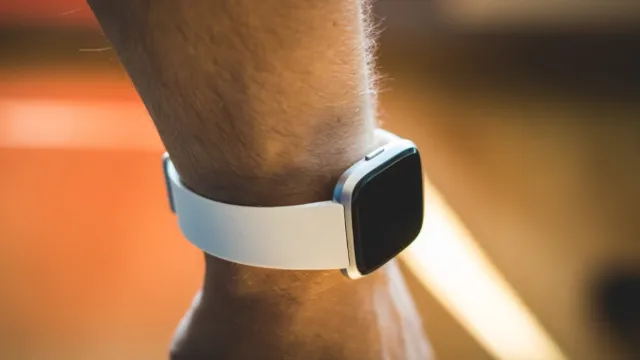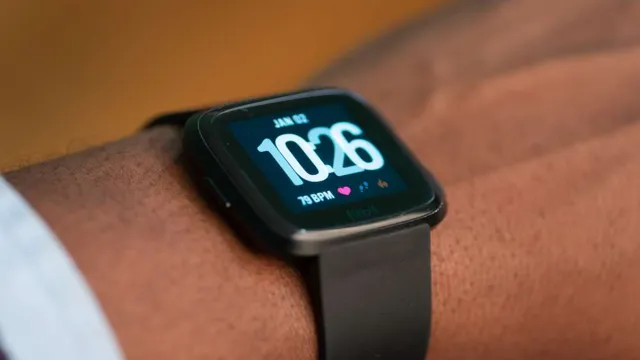Have you recently acquired a Fitbit or found an old one in your drawer, but can’t quite remember which model it is or how to use it? Don’t worry, you’re not alone. With so many different Fitbit models on the market, it can be challenging to keep track of which one you have and how to use it correctly. The good news is that identifying your Fitbit is easier than you might think, and once you know what you’re working with, using it to reach your fitness goals will be a breeze.
In this blog post, we’ll guide you through the steps to identify your Fitbit, whether it’s a Charge, Alta, Versa, or any other model, and share some tips on how to use it to get the most out of your fitness journey. So grab your Fitbit, and let’s get started!
Check the Model Name
If you’re unsure what model of Fitbit you have, don’t fret; there are a few ways to find out. The simplest method is to check the back of your device, where you’ll likely find the model name engraved. Some popular models include the Fitbit Charge 4, the Fitbit Versa 3, and the Fitbit Inspire
If your device is lacking an engraving, or if the text has faded away over time, there are other ways to determine which model you own. For example, you can open the Fitbit app on your phone, which should display your device name and model. You can also visit the Fitbit website and browse through the various products on offer to see if any of the pictures match your device.
By taking a few moments to identify your Fitbit model, you’ll be able to make the most of its features and personalization options.
Locate the Product Label on the Box
When you purchase a new product, it is essential to check the model name. The model name is vital because it identifies the specific product and its exact version. To check the model name, locate the product label on the box.
The product label is a sticker or a metal plate that contains all the vital information about the product. The model name is usually mentioned at the top of the product label, along with other relevant information such as the serial number, manufacturing date, and the product’s features. It is essential to ensure that you have the correct model name to avoid any confusion or problems with your purchase in the future.
By checking the model name, you can verify that the product you are getting is the exact one you intended to purchase. Remember, the model name is the most critical factor to consider, so always double-check it before making your purchase.

Check the Fitbit App on Your Phone
When it comes to ensuring your Fitbit device is compatible with your phone, checking the model name is crucial. To do so, simply open the Fitbit app on your phone and navigate to the account settings option. From there, choose the device option and verify that the model name matches the one on your physical device.
This step is important for two key reasons. Firstly, using a device that isn’t compatible with your phone may lead to issues with syncing data and accessing features. Secondly, it may also negatively impact your overall user experience.
By double-checking the model name on your app, you can rest assured that your device and phone are optimized to function together seamlessly. So, before you start tracking your fitness goals, make sure to take a quick look at your Fitbit app and ensure that your model name matches your physical device.
Look at the Display
If you’re wondering how to know what Fitbit you have, the simplest way is to look at the display. The type of display will give you a general idea of which model it is. For example, if your Fitbit has a small, rectangular display screen with rounded edges, it’s likely a Fitbit Flex.
If it has a square display screen with a metallic frame, it could be a Fitbit Versa. On the other hand, if your Fitbit has a screen that wraps around the edges of your wrist, it’s probably a Fitbit Sense or Fitbit Charge Of course, there are many variations among models, such as size, color, and features, so it’s always a good idea to look up your specific model to be sure.
But checking the display is a good starting point to identify which Fitbit you have.
Check for a Touchscreen Display
When it comes to purchasing a new device, whether it’s a tablet or a laptop, one important factor to consider is whether it has a touchscreen display. Touchscreens offer a more intuitive and interactive experience, allowing users to easily swipe, tap, and zoom with their fingers. Gone are the days of relying solely on a mouse or touchpad to navigate.
With a touchscreen display, you can have more precise control over your device and enjoy a more streamlined workflow. So, before you make your next purchase, make sure to check if it comes equipped with a touchscreen display to optimize your experience.
Check for a Colored, Non-Touchscreen Display
When looking for a device with a colored display, it is important to consider a few key points. Firstly, non-touchscreen displays tend to have better color accuracy and vibrancy than touchscreens due to their higher pixel density and lack of a protective layer. Additionally, a colored display can improve the overall user experience and make it easier to navigate menus and apps.
It is important to note that a colored display may also be more power-hungry than a black and white one, so it is worth checking the battery life of your chosen device before committing to a purchase. Overall, if you are in search of a enhanced visual experience, keep an eye out for a device with a colored, non-touchscreen display.
Check for a Black and White Display
If you’re in the market for a new display, it’s important to take a closer look and make sure it’s black and white. While color displays are more common nowadays, there are still some benefits to opting for a black and white option. For starters, they’re often more affordable.
Additionally, black and white displays are less distracting than their color counterparts, making them ideal for jobs that require a lot of focus, like coding or writing. Plus, they’re easier on the eyes, reducing eye strain during long periods of use. So before you make a decision, take the time to consider a black and white display option.
It could end up being the perfect choice for your needs.
Check the Features
If you’re wondering how to know what Fitbit you have, don’t worry – it’s actually quite easy to figure out! One of the first things you should do is check the device itself for any identifying information, such as a model number or name. If you no longer have the original packaging, you can also try going into the Fitbit app on your phone to see which device is synced up. Another way to identify your Fitbit is by looking at its features – different models have different capabilities, so you can compare yours to a list of known models to see which one matches up.
Some common features to look for include heart rate monitoring, GPS tracking, water resistance, and battery life. Once you’ve identified your Fitbit, you can start exploring all of its features and making the most out of your workout and health tracking experience!
Identify Basic Features
When it comes to identifying basic features, there are a few key things to look for. First and foremost, consider the purpose of the product or service you’re interested in and whether or not it fulfills your needs. For example, if you’re in the market for a new phone, you might look for features like a large, high-resolution screen, a powerful processor, and a long battery life.
Other important features could include durable construction, a high-quality camera, and user-friendly software. Whatever you’re shopping for, it’s also a good idea to do your research and read reviews from other customers to get an idea of what features are most important and how well different products perform. By taking the time to carefully evaluate features and gather information, you’ll be able to make an informed decision and choose a product that truly meets your needs and expectations.
Identify Advanced Features
When it comes to choosing the right software or application, taking some time to identify advanced features is crucial. While many products claim to have all the necessary features, advanced features can add more value and efficiency to your project. One of the first things to check for is automation.
Automated tasks can help save time and energy, allowing you to focus on more important things. Another feature to look out for is customization, which lets you tailor the software to fit your specific needs. Collaboration tools are also essential, allowing team members to work together seamlessly.
Additionally, data management and storage capabilities give you the ability to organize and store large amounts of data efficiently. Don’t forget to check for security features, such as two-factor authentication and encryption, to ensure your data is protected. By identifying advanced features, you can choose a software or application that fits your needs and helps you achieve your goals efficiently.
Contact Fitbit Support
If you’re unsure about what Fitbit you have, there are a few ways to find out. The easiest way is to check the device itself and look for any branding or labels that indicate the model. Another clue can be found in the Fitbit app that you use to sync your device.
If you go to the Account tab and then select your device, you will see a model number listed. If you’re still unsure, you can always contact Fitbit support for assistance. They can help you identify your model and answer any questions you may have about your device.
So don’t hesitate to reach out if you’re feeling confused. Knowing the exact model of your Fitbit can be helpful when troubleshooting issues or finding compatible accessories.
Conclusion
In conclusion, determining which Fitbit you have doesn’t have to be a guessing game. With simple steps like checking the device’s model number or inspecting the physical appearance, you’ll be able to identify the right model in no time. And if you still can’t figure it out, just ask your Fitbit – after all, it’s been tracking your every move since day one, and it probably knows you better than you know yourself.
So let your trusty wrist companion guide you and choose the perfect Fitbit for you!”
FAQs
How do I identify my Fitbit model?
To find out what Fitbit model you have, go to the Fitbit app on your phone and select the device icon in the top left corner. Then, click on the name of your device and it will display the model.
What if I don’t have access to the Fitbit app?
If you don’t have access to the Fitbit app, turn your device over and look for the model name on the back. Additionally, you can Google the serial number of your device and it should come up with the model.
Can I find out my Fitbit model by its features?
Yes, you can determine the model of your Fitbit by its features. For example, the Fitbit Charge 4 is equipped with GPS while the Inspire 2 does not have GPS.
What if I still can’t identify my Fitbit model?
If you still can’t identify your Fitbit model, you can contact Fitbit customer support and they will assist you in determining your device’s model.
